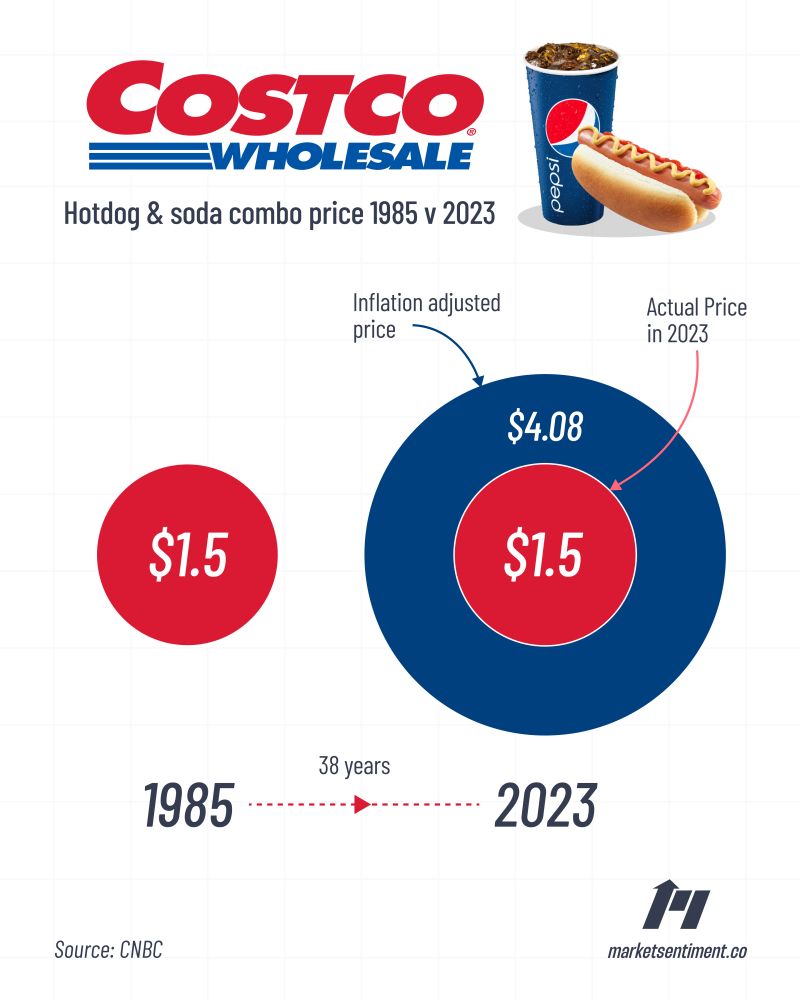Loss Leaders: The Strategic Art of Selling at a Loss
Ever wondered why some of your favorite products are priced so low that it seems too good to be true?
Take Costco’s hot dog and soda combo for example. Costco has been selling this combo consistently for $1.50….for 38 years! Even though this humble combo is a loss maker for Costco, there are several reasons why they still have it on their food court catalog.
Welcome to the world of “loss leaders.”
Here’s a deep dive into why companies intentionally sell specific products at a loss and the strategy behind it.
1. Attracting Customers:
Loss leaders act as bait. By offering products at a price lower than the market rate, companies lure in customers, hoping they’ll make additional purchases. Think of the discounted printer with expensive ink refills or the affordable razor with costly blade replacements.
2. Boosting Sales Volume:
While the loss leader product might not be profitable, the increased foot traffic can lead to higher sales volumes for other products, compensating for the initial loss and often resulting in overall profit.
3. Encouraging Impulse Buys:
Once customers are in the store or on the website because of a loss leader, they’re more likely to make impulse purchases. These unplanned buys often have higher profit margins, balancing out the loss.
4. Building Customer Loyalty:
By offering products at unbeatable prices, companies can foster brand loyalty. Customers are more likely to return to a store where they believe they’re getting a great deal, even if it’s only on select items.
5. Edging Out Competition:
By undercutting competitors on price for specific products, companies can drive competitors out of the market or deter them from entering in the first place. Over time, this can lead to increased market share.
6. Cross-Selling Opportunities:
Loss leaders can be a gateway to introduce customers to higher-margin products or services. For instance, a discounted smartphone might lead to a lucrative contract or accessory sales.
7. Short-Term Inventory Management:
Loss leaders can help companies clear out old inventory to make room for new products. By offering products at a loss, they can quickly move stock and free up storage or shelf space.
Loss leaders are more than just discounted products; they’re a strategic tool that companies use to drive sales, increase customer loyalty, and edge out competitors. While it might seem counterintuitive to sell at a loss, the potential long-term gains can be substantial.
What are your thoughts about loss leaders? Have you encountered a loss leader strategy in your industry?
For more insights, subscribe to Signal https://lnkd.in/gbaF5him
#strategy #pricingstrategy #customerexperience #profitability #lossleader

